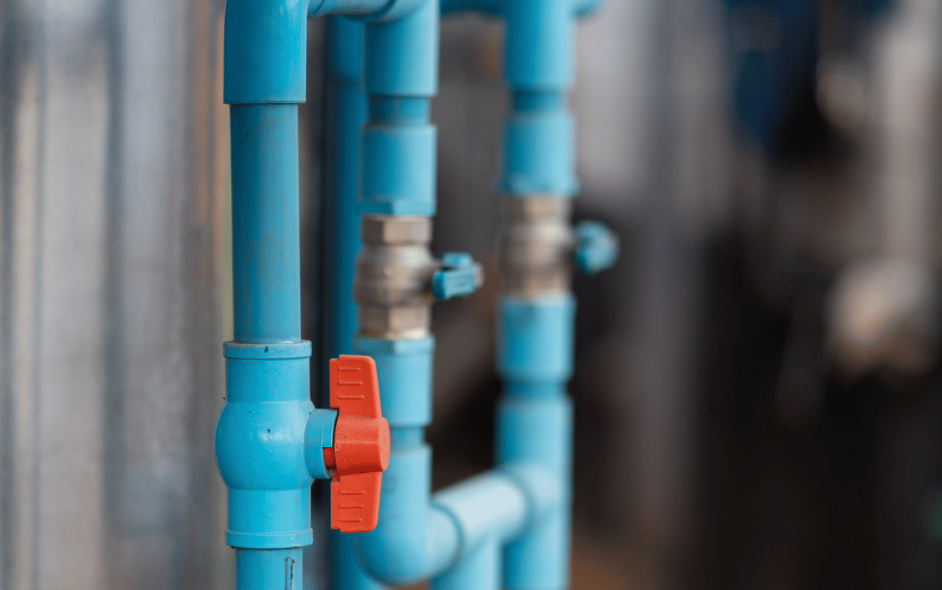Introduction
Fire protection systems are essential for ensuring safety in residential, commercial, and industrial buildings. One of the key components of these systems is the sprinkler pipe network, which delivers water effectively to control or extinguish fires. The diameter of sprinkler pipes is a crucial factor that affects water flow, pressure, and overall system performance. Proper selection of pipe diameter ensures that fire protection systems function optimally and comply with regulatory requirements.
This article provides an in-depth analysis of sprinkler pipe diameter, their significance, selection criteria, regulatory considerations, and challenges faced during installation. Understanding these factors will help engineers, contractors, and building owners design and maintain efficient fire suppression systems.
Understanding Sprinkler Pipe Diameter
The diameter of a sprinkler pipe directly influences the amount of water that can flow through the system. A properly sized pipe diameter ensures sufficient water delivery to the sprinklers while maintaining adequate pressure. Pipe diameters are typically measured in nominal pipe size (NPS) or diameter nominal (DN), depending on regional standards. The selection of the appropriate diameter depends on factors such as the required water flow rate, system design, and building occupancy type.
Common Standard Sprinkler Pipe Diameters
The standard pipe diameters used in sprinkler systems vary based on building requirements and fire safety codes. The following are the most commonly used pipe diameters:
1. Small-Diameter Pipes
- 1/2-inch (NPS 1/2 or DN 15): Used in some residential sprinkler systems where lower water demand is sufficient.
- 3/4-inch (NPS 3/4 or DN 20): Typically used for small branch lines where moderate water flow is needed.
- 1-inch (NPS 1 or DN 25): Common in residential and light commercial applications, delivering water to multiple sprinkler heads.
2. Medium-Diameter Pipes
- 1 1/4-inch (NPS 1.25 or DN 32): Suitable for small commercial applications and intermediate supply lines.
- 1 1/2-inch (NPS 1.5 or DN 40): Frequently used in commercial buildings where moderate water flow is required.
- 2-inch (NPS 2 or DN 50): A widely used size in commercial and industrial systems, serving as a main branch line.
3. Large-Diameter Pipes
- 2 1/2-inch (NPS 2.5 or DN 65): Used in buildings with higher water flow demands, such as warehouses.
- 3-inch (NPS 3 or DN 80): Common in large commercial and industrial facilities with significant fire suppression needs.
- 4-inch (NPS 4 or DN 100) and above: Typically used in main distribution lines for high-rise buildings and manufacturing plants.
Factors Influencing Sprinkler Pipe Diameter Selection
Several critical factors influence the appropriate sprinkler pipe diameter for a given installation:
1. Building Type and Occupancy
The fire risk and occupancy classification of a building determine the required pipe diameter. Residential buildings often use smaller diameters, whereas industrial facilities with high fire loads require larger pipes to meet water demand.
2. Water Supply and Flow Rate Requirements
The availability of water supply, including pressure and flow rate, significantly impacts pipe diameter selection. Regulatory codes such as NFPA 13 (Standard for the Installation of Sprinkler Systems) specify the minimum pipe diameter required to ensure adequate fire suppression.
3. Hydraulic Calculations
Hydraulic calculations determine the minimum required pipe diameter based on system water demand, pressure loss due to friction, and sprinkler head discharge requirements. Engineers perform these calculations to design systems that ensure proper water distribution.
4. Pipe Material and Internal Diameter
Different pipe materials have varying internal diameters, which influence water flow. Common materials used in sprinkler systems include:
- Steel Pipes (Black steel, galvanized steel)
- CPVC (Chlorinated Polyvinyl Chloride) Pipes
- Copper Pipes
- PEX (Cross-linked Polyethylene) Pipes The internal surface roughness of pipes can impact friction loss, requiring adjustments in pipe diameter selection.
5. Regulatory Compliance
National and local fire protection codes set minimum diameter requirements for sprinkler pipes. Compliance with standards such as NFPA 13, NFPA 14, and other regional regulations is essential for system approval and functionality.
Importance of Proper Pipe Diameter Selection
Selecting the correct sprinkler pipe diameter is crucial for ensuring effective fire protection. Proper sizing helps to:
- Ensure adequate water flow: Delivers the necessary volume of water to extinguish fires.
- Maintain required pressure levels: Prevents excessive pressure drops that could reduce sprinkler effectiveness.
- Meet regulatory requirements: Ensures compliance with fire safety standards.
- Optimize system efficiency: Reduces the risk of operational failures and unnecessary maintenance costs.
Challenges in Determining Pipe Diameter
Despite established guidelines, several challenges may arise when selecting sprinkler pipe diameters:
- Fluctuating water supply pressure: Low or inconsistent pressure may necessitate larger pipe diameters.
- Future expansion considerations: Systems should be designed to accommodate potential building modifications.
- Material selection constraints: Differences in pipe materials require adjustments in diameter to maintain system efficiency.
Conclusion
The selection of sprinkler pipe diameter is a critical factor in designing effective fire suppression systems. By understanding standard diameters, considering key influencing factors, and complying with fire protection regulations, engineers and building owners can ensure optimal system performance. Properly sized pipes enhance safety, ensure regulatory compliance, and contribute to the overall reliability of fire protection systems.
A well-planned sprinkler system with appropriately sized pipes plays a vital role in mitigating fire risks, protecting lives, and preserving property. Therefore, careful planning, precise calculations, and adherence to best practices are essential for ensuring a high-performing fire suppression system.


